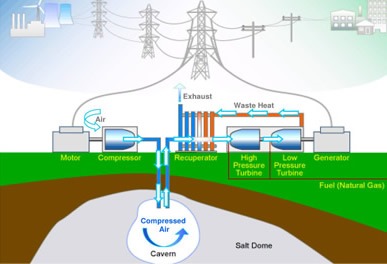Is Your Compressed Air System Environmentally Friendly and Economically Viable?

Every industry faces mounting pressure to minimize its environmental footprint while enhancing performance and sustainability. Reducing our impact on the environment not only benefits businesses but also ensures a brighter future for generations to come. One of the most straightforward ways to reduce our environmental impact when using compressed air is to ensure that our systems and equipment operate at peak efficiency. An efficient system not only cuts energy costs but also reduces carbon emissions.
Why should we be concerned about climate change? Because our planet’s atmosphere is warming at an unprecedented rate. Global temperatures have been steadily increasing for well over a century, accelerating in recent years, and have now reached record highs. The severe consequences of these climate changes include recent floods in Pakistan, wildfires in the Amazon, the melting of Antarctic glaciers, and the looming threat of rising sea levels by several feet.
The root cause? Carbon dioxide (CO2) emissions are driving the greenhouse effect, trapping heat and causing our planet to warm at an unnatural pace. To keep the Earth’s temperature in check, reducing carbon pollution is absolutely essential.
So, what can you and your company do to address this issue? Here are some steps you can take to achieve a win-win situation: saving on electricity bills while earning carbon credits.
Monitor Compressed Air Energy Use: If you can’t measure it, you can’t improve it! Monitoring your system’s energy consumption is crucial. By tracking energy usage, you can quickly identify areas where energy is being wasted. Conducting an energy audit is an ideal starting point for this process, helping pinpoint areas for improvement.
Check for Air Leaks: Leaks are a major source of energy wastage in compressed air systems. Estimates indicate that up to 20% of total compressed air consumption may be lost through leaks. Addressing air leaks can be the most significant energy-saving measure you can take. While leaks near the compressor are usually the costliest due to the high-pressure environment, they are fortunately less common. More frequent leaks occur at pipe joints, flanges, fittings, and condensation traps. Using an ultrasonic acoustic detector is the most effective way to locate these leaks, even in noisy environments. Implementing a formal leak management program can further reduce costs and energy waste.
The Financial Cost of Sustainability: Energy expenses account for over half of a compressor’s total cost of ownership. Therefore, optimizing air systems to use less energy can lower both the production cost of compressed air and a company’s carbon footprint. Consider the composition of your compressed air system when calculating operating costs versus compressed air production rates. Certain piping designs can lead to pressure losses, creating back pressure within the system. Ideally, there should be no pressure loss solely from the piping system.
One common layout design in compressed air production is the installation of 90-degree tee connections, which creates turbulence and results in added energy expenses to maintain the desired system pressure. It’s important to be aware of the pressure rating of each component to prevent compressed air wastage and increased energy consumption.
Maintain Your System: Inadequate practices and poor maintenance contribute to excessive waste. Regular monitoring and maintenance are critical for a sustainable and efficient compressed air system. Regularly service and performance test all compressed air equipment, replace filters, and ensure all components are clean. Well-maintained filters can help maintain air quality and prevent pressure drop. Consider partnering with a service provider like Sakoon Pneumatics, which offers yearly service contracts to handle this for you.
